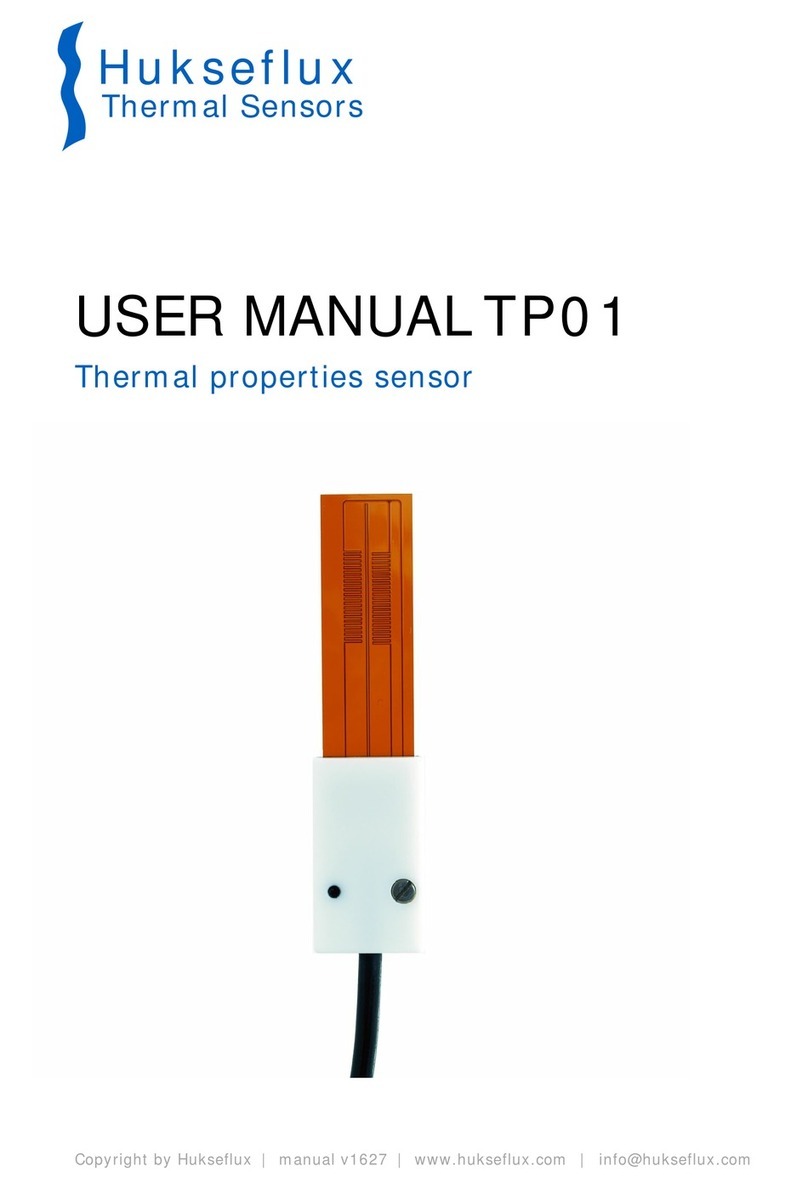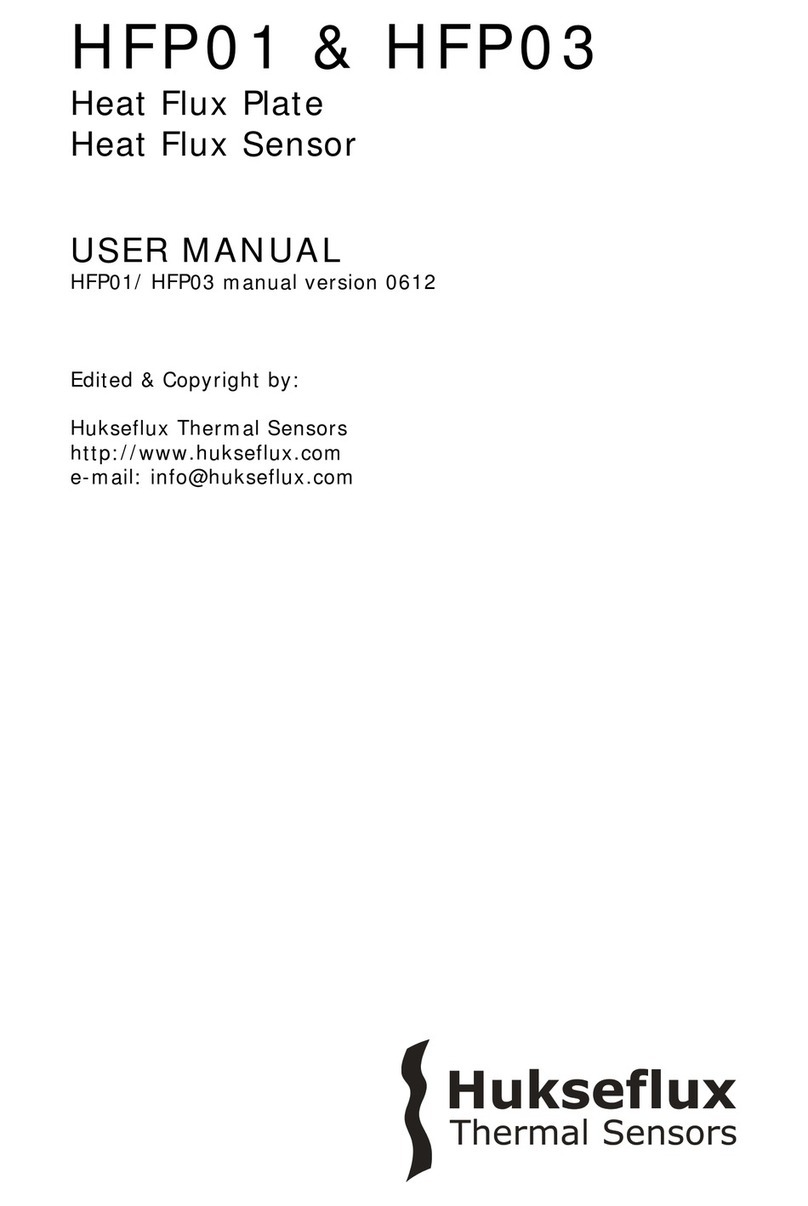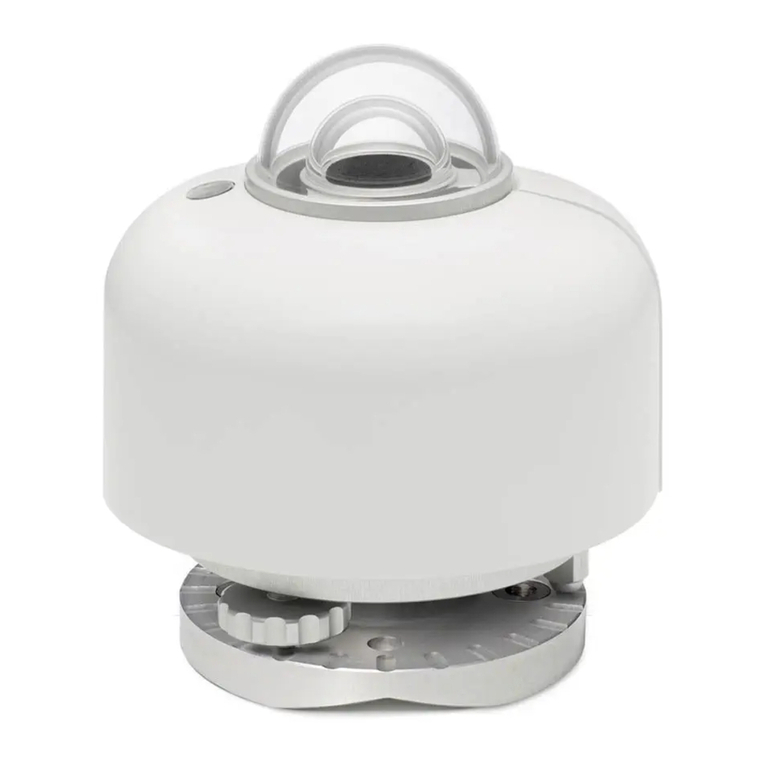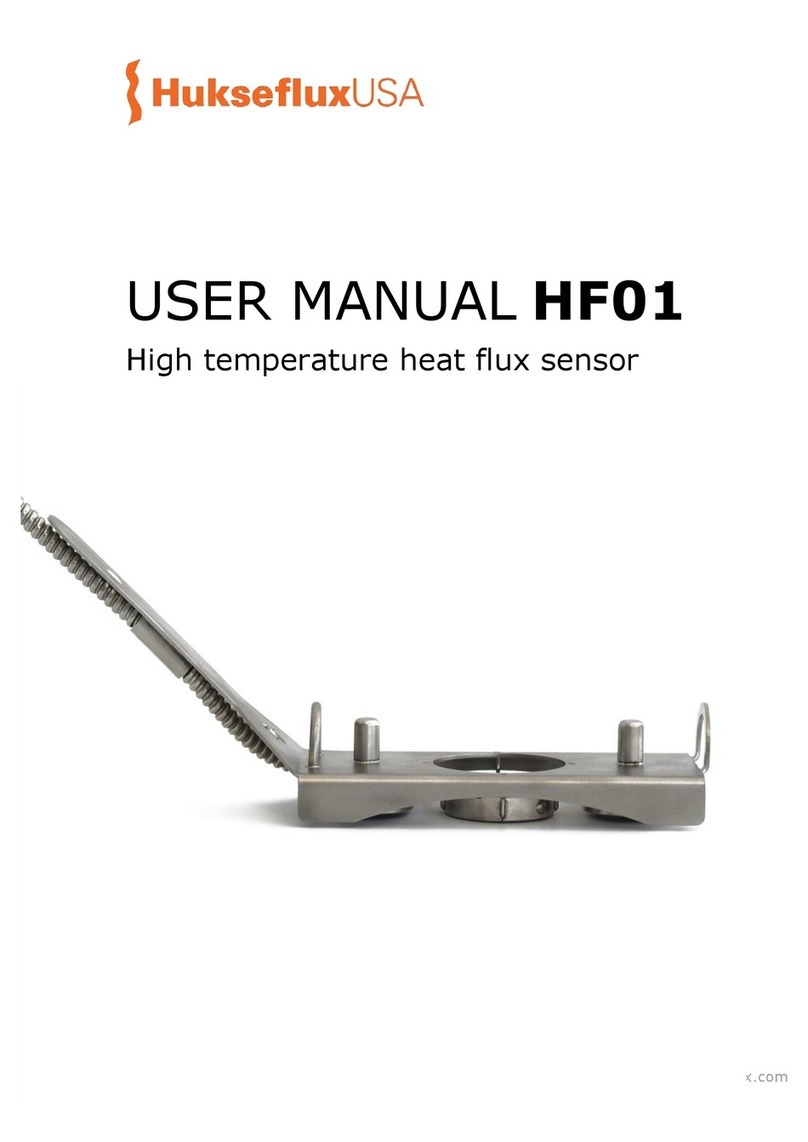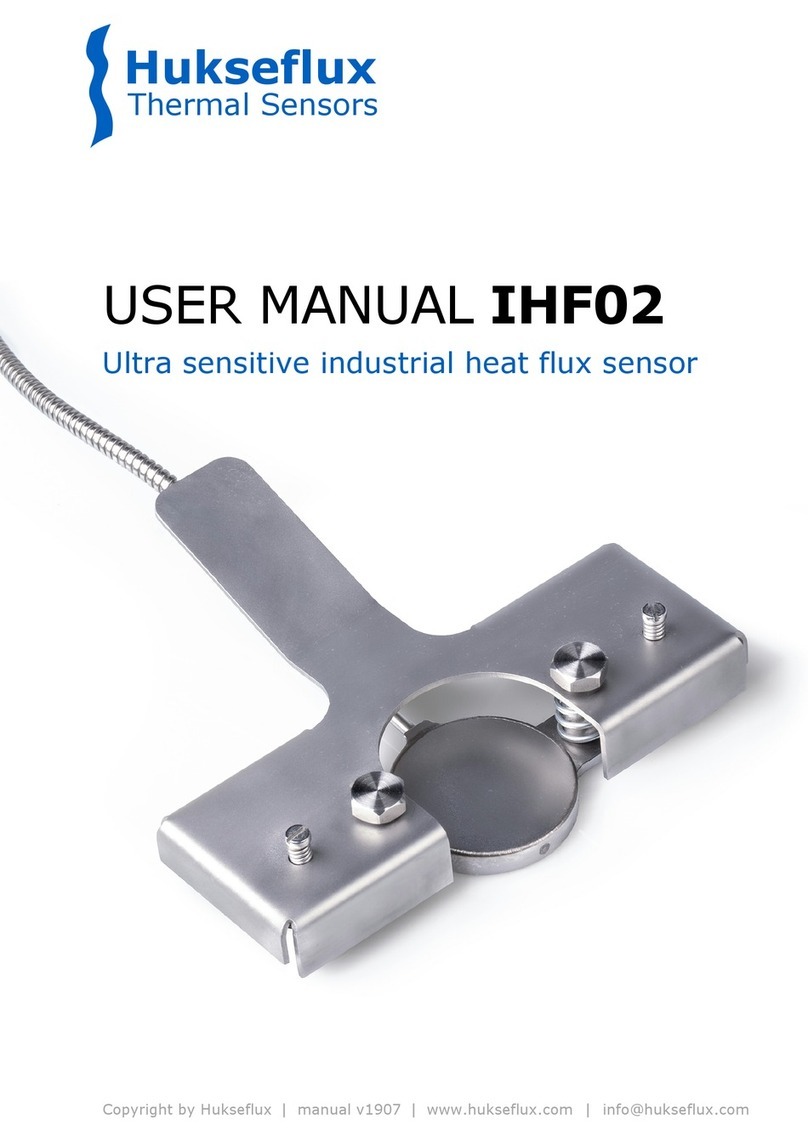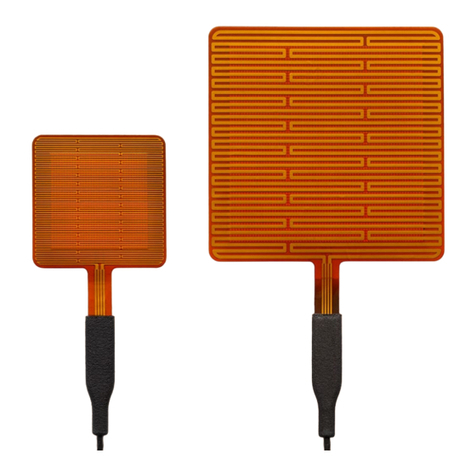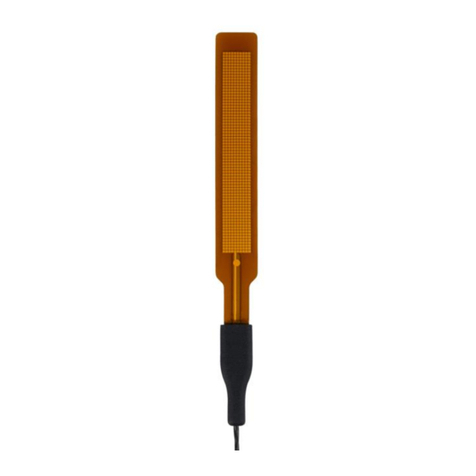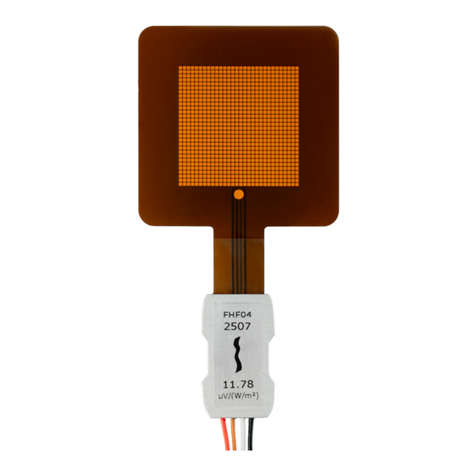
BLK - GLD sticker series manual v2214 8/47
1Ordering and checking at delivery
1.1 Ordering BLK – GLD stickers
The BLK – GLD sticker series is a range of accessories for use with Hukseflux heat flux
sensors of FHF05(SC) series and HFP01.
The ordering codes of the different versions in the series are BLK-10X10, BLK-15X30, BLK-
50X50, BLK-15X85, BLK-85x85, BLK-80, GLD-10X10, GLD-15X30, GLD-50X50, GLD-
15X85, GLD-85X85 and GLD-80.
Table 1.1.1 Overview of versions in the BLK – GLD sticker series
Black absorbing sticker to measure convective + radiative heat flux, to be used
with FHF05(SC)-10X10 heat flux sensors
Black absorbing sticker to measure convective + radiative heat flux, to be used
with FHF05(SC)-15X30 heat flux sensors
Black absorbing sticker to measure convective + radiative heat flux, to be used
with FHF05(SC)-50X50 heat flux sensors
Black absorbing sticker to measure convective + radiative heat flux, to be used
with FHF05(SC)-15X85 heat flux sensors
Black absorbing sticker to measure convective + radiative heat flux, to be used
with FHF05(SC)-85X85 heat flux sensors
Black absorbing sticker to measure convective + radiative heat flux, to be used
with HFP01 heat flux sensor
Gold reflective sticker to measure convective heat flux only, to be used with
FHF05(SC)-10X10 heat flux sensors
Gold reflective sticker to measure convective heat flux only to be used with
FHF05(SC)-1530 heat flux sensors
Gold reflective sticker to measure convective heat flux only, to be used with
FHF05(SC)-50X50 heat flux sensors
Gold reflective sticker to measure convective heat flux only, to be used with
FHF05(SC)-15X85 heat flux sensors
Gold reflexive sticker to measure convective heat flux only, to be used with
FHF05-85X85 heat flux sensors
Gold reflective sticker to measure convective heat flux only, to be used with
HFP01 heat flux sensor
A common option is:
